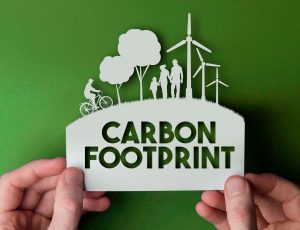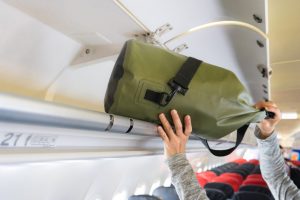Travel Green: Buying Offsets & More Ways to Reduce Your Carbon Footprint
Todd L Sack MD FACP
Most of us love to travel. Our trips add spice to our lives, whether finding new friends, encountering cultures, visiting loved ones, learning new ideas, or building our business. Travel’s “dark side “ is its environmental costs, the carbon dioxide and other pollutants created from the fossil fuels burned for travel by air, land or sea. One long distance plane trip can create more pollution than a person might otherwise create in an entire year!
Here we tell you about travel tips that we learned from an excellent May 2019 article by Andrew Wan. We thank the travel website www.MillionMilesSecrets.com for allowing us to share Wan’s piece: https://millionmilesecrets.com/guides/staying-green-while-traveling-how-to-reduce-your-carbon-footprint/ .
Your Carbon Footprint
The conversation begins with the greenhouse gases like carbon dioxide, methane and nitrous oxide that have risen dramatically in the Earth’s atmosphere since the Industrial Revolution. They are called “greenhouse gases” because these molecules have the tendency to trap the sun’s rays and cause the climate to warm. We must act now to prevent the health crisis that is coming with climate change.
Each of us is responsible for greenhouse gases as we use energy in our lives, such as to power our cars, light our homes, heat our buildings, and produce the things we consume. Each of us has a “carbon footprint” that warms the climate.
Air travel is a particularly serious contributor. Traveling wisely is about understanding and reducing our carbon footprint.
Calculating Carbon
Short trips create more greenhouse gases per mile than long trips, older planes are generally worse than new ones, and airlines that tend to fill their seats use less fuel per passenger. Luckily, a cool new website from Denmark called “atmosfair” makes it simple to estimate your plane trip’s carbon dioxide output. They’ve assembled data from over 120 airlines and thousands of flights into an online calculator that takes just three minutes: https://www.atmosfair.de/en/offset/flight/ .
Cutting Back
Fortunately, there are things you can do about those emissions. Here are the top six that we learned from Million Miles Secrets.
1. Stay Home
Think seriously before you decide to travel. Why not use the telephone, email and video conferencing to stay in touch, get the training you need, or conduct business? You’ll save money and time while avoiding carbon dioxide release.
2. Fly on a More Fuel-Efficient Airplane
Certain aircraft are more fuel-efficient than others, generating far fewer carbon emissions. Their efficiency will depend on a number of factors such as the plane’s weight, aerodynamic design, materials used, and engine efficiency.
Here are four of the most fuel-efficient aircraft:
Airbus A3250 XWB
Airbus A380
Boeing B787-800 Dreamliner
Boeing 747-8 Intercontinental
3. The Airline Company You Keep
Sometimes your route will give you a choice of airlines. Atmosfair has rated the world’s largest airlines by their environmental impact. You can quickly read the rankings or read about their fascinating methodology to satisfy your nerd side: https://www.atmosfair.de/en/air_travel_and_climate/atmosfair_airline_index/
4. Travel Light
You can do this: pack light. This reduces the weight hoisted by you and by your plane’s engines, meaning fewer of those carbon emissions.
5. Rent Green
Pick an energy-wise car when you rent. Think electric, hybrid or small. By the way, electric cars turn out to be a lot of fun to drive and the experts tell us that by 2024 it will be less expensive for companies to build an electric than a gas car. Most of us may never again buy a gasoline vehicle.
Of course, travel by train, by bus or by foot is are even better for your carbon footprint.
6. Easy-to-Buy Carbon Offsets
There are non-profit organizations around the world whose business is to decrease greenhouse gases. They do this by investing in renewable energy like solar and wind power, by encouraging energy efficiency measures and by funding sustainable agriculture. Once you have calculated your voyage’s carbon footprint, you can pay a company to reduce greenhouse gases by the same amount. This is called buying “offsets”.
Here are a few certified organizations that fund projects to offset carbon emissions:
CoolEffect.org
GoldStandard.org
ClimateActionReserve.org
CarbonFund.org
You can pick the project that you like and make a cash donations to any of these organizations. Airlines including JetBlue and Delta give you the option to buy carbon offsets directly from their websites when you buy tickets.
I traveled recently to the meeting of the American Medical Association in Chicago, Illinois to talk about climate change education for doctors, something the AMA is working hard on. The calculator told me that the carbon footprint for my flights was 0.23 metric tons of carbon dioxide. I paid $8.79 (U.S.) online to CoolEffect.org to buy 1 metric ton of carbon offsets with a wind power project in Costa Rica, covering my carbon for this trip and a few more.
Less pollution and less greenhouse gases is good for everyone’s health.
Dr. Todd Sack is the Editor of MyGreenDoctor.org, an environmental sustainability service for healthcare offices.
Andrew Wan contributes to the travel website www.MillionMilesSecrets.com. He has nearly a decade of lending experience working with non-profit credit unions, helping members qualify for and save money on loans to improve their financial situations.





